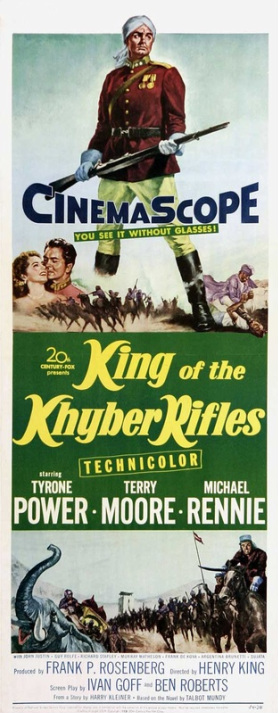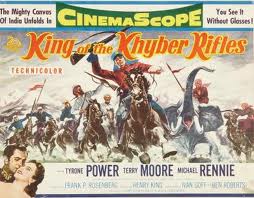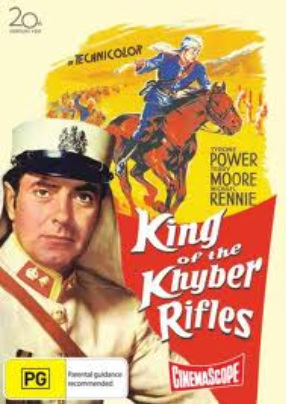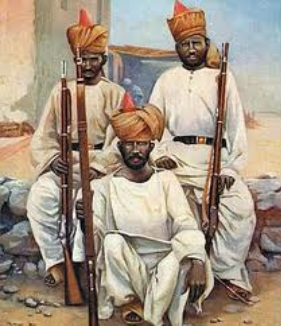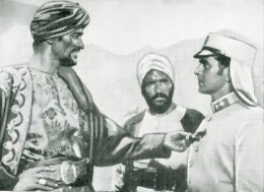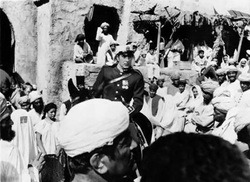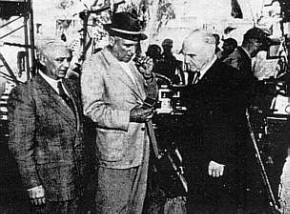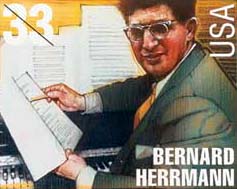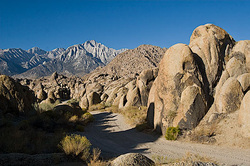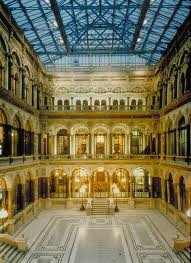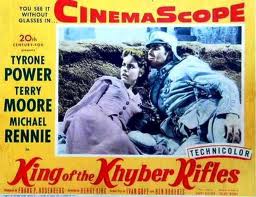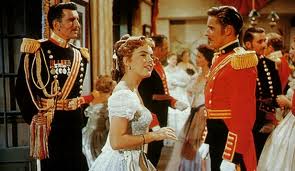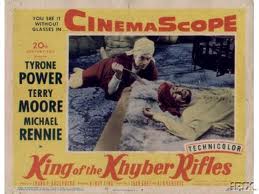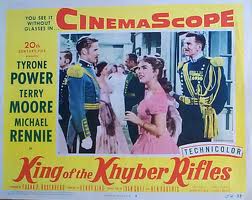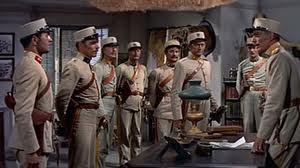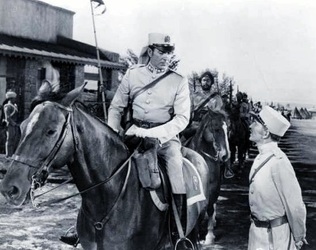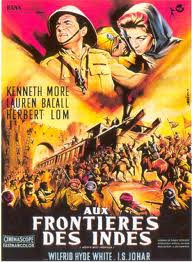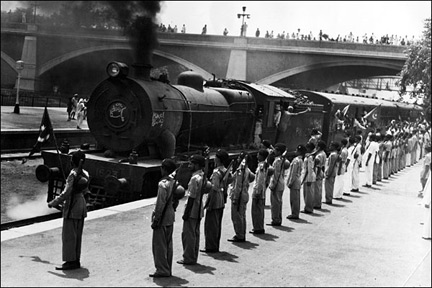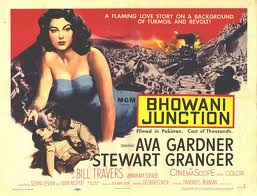King of the Khyber Rifles
20th Century Fox versus the India OfficeIt took more than two decades for the film script for King of the Khyber Rifles to progress from film script to film. During this time 20th Century Fox and the U.K. government's India Office argued over the proposed movie. An India Office memo of 1936 stated "We would much prefer that this film should not be produced if it is possible to stop it." John Ford's 1930s' epic The Drum had angered nationalist opinion in India during that decade, causing riots in Madras and Bombay. Indian Office officials wanted to avoid any source of Anglo-Indian friction during the tense decades of Gandhi's movement for Indian independence and during World War 2, when some nationalist groups objected to Indians fighting in the war alongside the British.
See Jules Stewart, The Khyber Rifles: From the British Raj to Al Queda (Sutton Publishing, 2005), 29-30 |
Scenes from the movie
About this movie:
The plot concerns the efforts of Captain Alan King to subdue insurgent native elements in the Khyber area who are attempting to overthrow British rule in the form of the Peshawar garrison.. The rebels are led by Kerram Khan, an old boyfriend of King, who is of mixed Anglo-Indian parentage.Not only does King have to deal with overcoming his former companion. He also has to deal with racial prejudice, simmering tensions between colonisers and the colonised and the not unwelcome attentions of the Garrison's colonel's beautiful, impetuous and strong-willed daughter.For all the cliches of the plot, King of the Khyber Rifles is a neglected movie by a neglected director. It deserves greater recognition.
King was the first of the movies shot in the Cinemascope widescreen process to make effective and intelligent use of its potentialities, unlike, for example, its contemporaries The Robe and Three Coins in the Fountain. The director Henry King, working with the great cinematographer Leon Shamroy, not only used Cinemascope to deploy large casts in sweeping, panoramic shots of pursuits, rugged terrain and battle. They also used to it enhance scenes in confined settings, such as the tents of the Indian tribesmen, and in suggesting emotional relationships.Look at the excerpt below to see how the larger screen space is used to illustrate the changing relationship between Tyronne Power and the impetuous Terry Moore in a way that anticipates Stanley Kubrick's famous chateau interior sequence where he uses spaces and movement to mirror the frustration of Dax and his conflict with his superior officer.
The movie also deals with two issues not usually associated with action movies. Its plot focuses on a racial issue. The hero, King, is of mixed race - Anglo-Indian - and for this he is rejected by a fellow officer. His commanding officer is uneasy with this racist attitude, and the commander's daughter treats it with contempt. KIng himself is proud of his mixed race and makes no attempt to hide it. His foster brother is a tribesmen leading the anti-British forces in the region. Several scenes in the movie depict patronising attitudes and actions by the British towards their colonial subjects - hardly a subject to be expected in a fifties Hollywood epic.
King of the Khyber Rifles is also one of the few films set during the 1857 Indian Rebellion (as Indians call it), also known as the Indian Mutiny ( as the British prefer). One of the most interesting sequences shows the hero trying to convince sceptical Muslim troops that their new rifles' cartridges are not coated with pig grease. Such allegations were a major catalyst in igniting the revolt. The film contains a major historical inaccuracy. It shows the Khyber Rifles repelling rebels during the Indian Rebellion / Mutiny. Impossible, because the Khyber Rifles unit was not formed until the 1880s! In 1897 Afridi tribes in the Kyber rose against the British, captured some forts and after a few months were put down with the help of the Rifles, whose troops were Afridi themselves.
For suggested books and articles which provide further background and information on the historical events and the people associated with the movie, go to this Cliomuse page.
